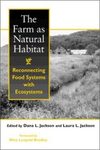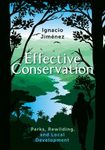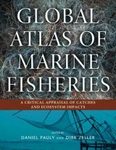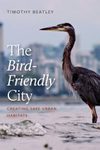![Restoring Neighborhood Streams Restoring Neighborhood Streams]()
Click to have a closer look
About this book
Contents
Customer reviews
Biography
Related titles
About this book
Thirty years ago, the best thinking on urban stream management prescribed cement as the solution to flooding and other problems of people and flowing water forced into close proximity. Urban streams were perceived as little more than flood control devices designed to hurry water through cities and neighborhoods with scant thought for aesthetics or ecological considerations. Stream restoration pioneers like hydrologist Ann Riley thought differently. She and other like-minded field scientists imagined that by restoring ecological function, and with careful management, streams and rivers could be a net benefit to cities, instead of a net liability. In the intervening decades, she has spearheaded numerous urban stream restoration projects and put to rest the long-held misconception that degraded urban streams are beyond help.
What has been missing, however, is detailed guidance for restoration practitioners wanting to undertake similar urban stream restoration projects that worked with, rather than against, nature. Restoring Neighborhood Streams presents the author's thirty years of practical experience managing long-term stream and river restoration projects in heavily degraded urban environments. Riley provides a level of detail only a hands-on design practitioner would know, including insights on project design, institutional and social context of successful projects, and how to avoid costly and time-consuming mistakes. Early chapters clarify terminology and review strategies and techniques from historical schools of restoration thinking. But the heart of Restoring Neighborhood Streams comprises the chapters containing nine case studies of long-term stream restoration projects in northern California. Although the stories are local, the principles, methods, and tools are universal, and can be applied in almost any city in the world.
Contents
Foreword
Acknowledgments
Chapter 1. Is the Restoration of Urban Streams Possible?
Chapter 2. Defining Restoration
Chapter 3. An Introduction to the Schools of Restoration
Chapter 4. Evaluations of Watershed Hydrology, Geomorphology, and Hydraulics Schools
Chapter 5. Evaluations of Applied Wildlife Biology
Chapter 6. Neighborhood-Scale Restoration Projects
Chapter 7. Regional Multiobjective Flood-Damage-Reduction Restoration
Chapter 8. A View across All the Cases
References Cited
Customer Reviews
Biography
Ann L. Riley has served as the Watershed and River Restoration Advisor for the San Francisco Bay Regional Water Board of California since 2001. Since the 1970s, Riley has worked with government agencies, policy institutes, and non-profit organisations on stream and floodplain management and restoration. In 2004, she was awarded the Salmonid Restoration Federation Nat Bigham Restorationist of the Year Award and in 2003 earned the Governor's Economic and Environmental Leadership Award.
By: Ann L Riley(Author), Doug Plasencia(Foreword By)
268 pages, b/w photos, b/w illustrations, tables
"an honest, proficient and hopeful evaluation of the practice of urban stream restoration [...] anyone with an interest in the field of ecological restoration [...] will benefit from reading Dr. Riley's book and embracing her wisdom."
– The Compleat Wetlander, the blog of the Association of State Wetland Managers
"When Riley entered the field, some called restoration a pipe dream: the waterways were too degraded, the political and economic constraints too great. She and the rest of the local restoration community have proven otherwise. The streams in this book have become neighborhood treasures, with improved water quality and flood safety."
– Estuary News
"Exceptionally well written ,organized and presented, Restoring Neighborhood Streams is as informed and informative as it is thoughtful and practical in concept and application."
– Midwest Book Review
"Anyone who cares about creeks and beavers should go buy a copy right now. It will pay for itself many times over."
– Worth a Dam blog







































